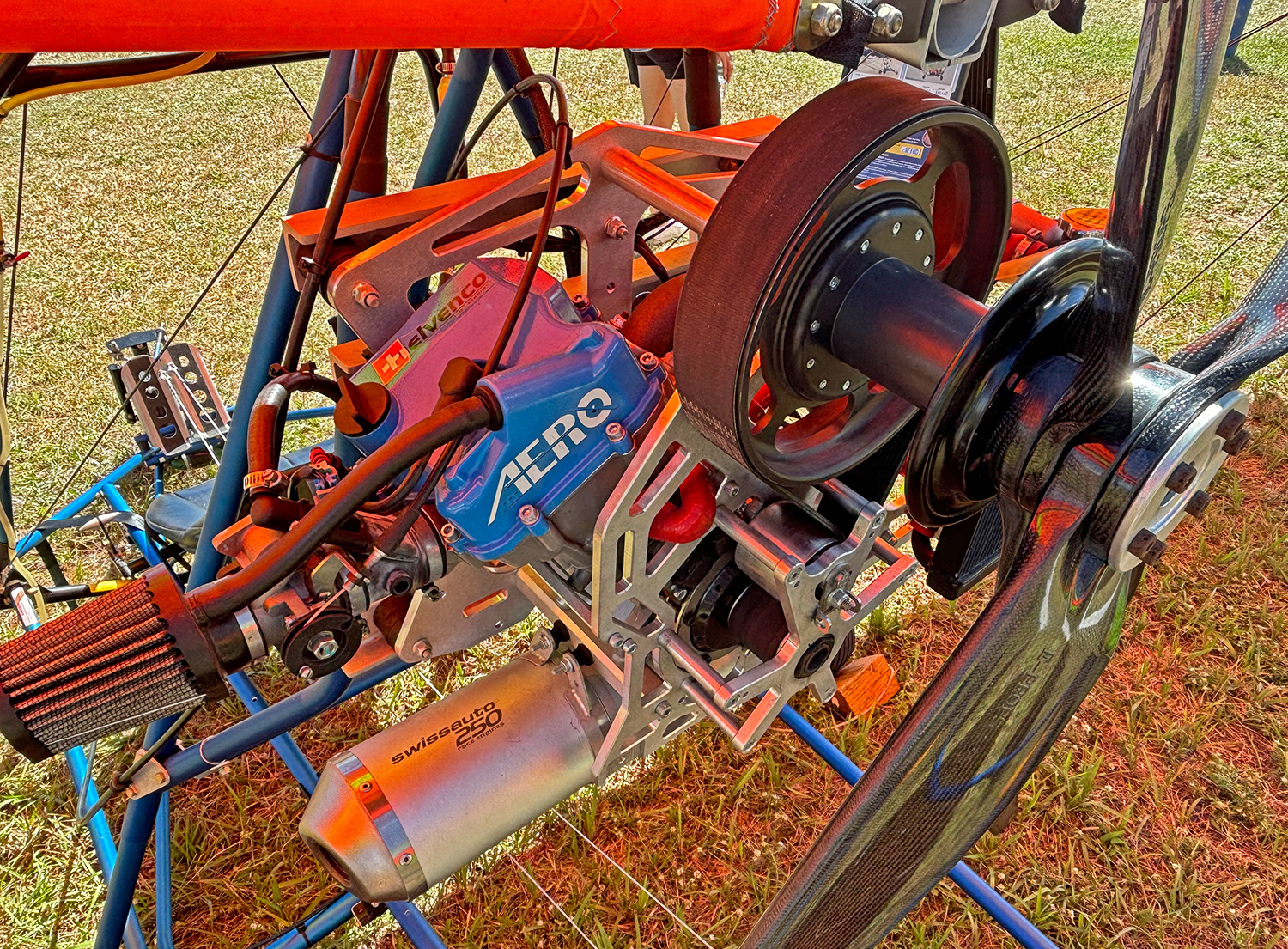 Air-Tech, supplier of the Aero 1000 HO 4-stroke ultralight engine, is here at Sun ‘n Fun to remind builders that they have engines ready for immediate delivery. Air-Tech, which is a full-service, authorized dealer for the popular Quicksilver aircraft, introduced this 39-hp electronically fuel injected thumper a few years back. The company was responding to light aircraft pilot requests for four-stroke reliability. “The two-stroke engine will be a thing of the past for aviation sooner or later,” contends Air-Tech production manager Ken Borne. The problem, Borne says, has been the availability of 4-strokes to replace these engines.” But now we have several of these Helvenco Swiss-made engines ready to go at all times,” he said. The engine has been in use for more than a decade in Europe’s highly competitive carting world,” details Borne. “The cart racers run them for 24 hours at up to 15,000 RPM. With us flying this high altitude version to only 9200 RPM you can bet there’s lots of reliability left over.”
Air-Tech, supplier of the Aero 1000 HO 4-stroke ultralight engine, is here at Sun ‘n Fun to remind builders that they have engines ready for immediate delivery. Air-Tech, which is a full-service, authorized dealer for the popular Quicksilver aircraft, introduced this 39-hp electronically fuel injected thumper a few years back. The company was responding to light aircraft pilot requests for four-stroke reliability. “The two-stroke engine will be a thing of the past for aviation sooner or later,” contends Air-Tech production manager Ken Borne. The problem, Borne says, has been the availability of 4-strokes to replace these engines.” But now we have several of these Helvenco Swiss-made engines ready to go at all times,” he said. The engine has been in use for more than a decade in Europe’s highly competitive carting world,” details Borne. “The cart racers run them for 24 hours at up to 15,000 RPM. With us flying this high altitude version to only 9200 RPM you can bet there’s lots of reliability left over.”
The big bore, short stroke design is supposed to have a 500 hour inspection and a 1000 hour TBO, but Borne says they’re very sure the engine can go a long time without issues given the engine’s track record. The engine comes as a complete unit with a mount. Bolt it on, add a prop and fuel it up to fly using only 1.2 gallons per hour. Packages sell for about $10,000.


These are spendy, but what you’re getting for the price is much better fuel efficiency and – even more important – much better reliability. I think a LOT of people are turned off ultralights by the maintenance requirements and the “when is the engine just going to stop while I’m flying” reliability of two-stroke engines. Amongst other issues two-strokes have.
As I know from personal experience, even a properly maintained two-stroke can just decide to die on you. And as Murphy’s Law would have it, inevitably this occurs at one of the most inopportune times. Like on take off (my case) or when you’re flying somewhere where landing options are sub-optimal. An engine failure at a bad time can make even seasoned pilots reconsider whether or not they REALLY want to be flying that engine. To say nothing of newer pilots.
Yeah it’s expensive, but you have to ask how much a more efficient and reliable engine is worth to you. Personally I think my life is worth a couple thousand dollars more than I’d otherwise spend. Because your life, or at least the airframe, is potentially the cost of an engine failure at the wrong time.
(I’m not a salesperson nor am I associated with this engine in any way. Just a person who tries to put things into proper perspective and who understands that – just like with mattresses and shoes – sometimes it makes a lot of sense to spend more money on higher quality.)
V-2? Mass? (lbs/kg), dimensional info? Link for the manufacturer comes back as unsafe.
What ever happened to the Subaru conversions that were all the rage years ago touting good horse power and reliability @ a fraction of the price? A friend of mine told me he had a number of these car engines that were great.
Another great thing that’s happening is the automotive industry has done an excellent job with all the engineering to build very reliable , light weight , fuel efficient engines. One example is the 100 hp Toyota Prius engine that many folks put over 300,000 miles on them , get 50+ miles per gallon and have no issues at all. The salvage yards are full of them for really cheap money too.